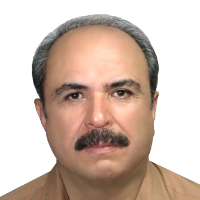Degradation of Formaldehyde From Synthetic Wastewater Using Fe2+/H2 O2 /O3 Process
Author(s):
Article Type:
Research/Original Article (دارای رتبه معتبر)
Abstract:
Formaldehyde is used in many industries for its different chemical characteristics. The wastewater in these industries contains large amounts of formaldehyde which is dangerous and toxic for human and environment. The purpose of this study was to investigate the efficiency of Fe2+/H2 O2 /O3 process in degradation of formaldehyde from synthetic wastewater. This experimental bench-scale study in batch system was conducted on the synthetic wastewater in primary concentration of formaldehyde (500 mg/L). The maximum percentage of formaldehyde removal was 72.5% that was observed in molar ratio of 2.4 [H2 O2 ]/[Fe2+]. After determining optimum [H2O2]/[Fe2+], the effects of pH variables, function time, and ozone concentration were studied in formaldehyde removal. In this process, the maximum degradation efficiency of formaldehyde in 0.7 mg/L ozone concentration and in 2.4 of molar ratio for [H2 O2 ]/[Fe2+] was 85.84% after 20 minutes. Moreover, the effect of pH and ozone concentration was significant in degradation efficiency (P<0.05). Generally, the Fe2+/ H2 O2 /O3 process seems to be a practical and reliable method in treating the industrial wastewater contaminated with high concentrations of formaldehyde.
Keywords:
Language:
English
Published:
Avicenna Journal of Environmental Health Engineering, Volume:4 Issue: 2, Dec 2017
Pages:
1 to 5
https://magiran.com/p1972166
مقالات دیگری از این نویسنده (گان)
-
Assessment of the impact of tourism attractions with an emphasis on economic and environmental sustainable: A case study in Isfahan
Narges Mohammadzadeh, Jamal Mohammadi, Musa Dehghani, Fatemeh Akbarzadeh, Seyed Mahdi Takhtfiroozeh, *
Environmental Health Engineering and Management Journal, Autumn 2024 -
The approach to the treatment of venomous and poisonous arthropod bites and stings in ancient medicine: A narrative review
, Shahrad Tajaddini, Masoomeh Varzandeh *
Journal of Emergency Practice and Trauma, Summer-Autumn 2023



